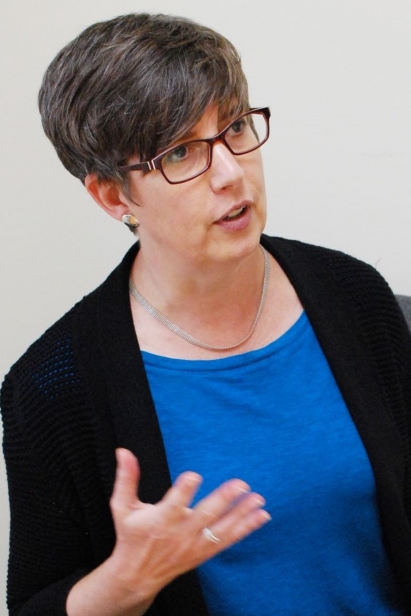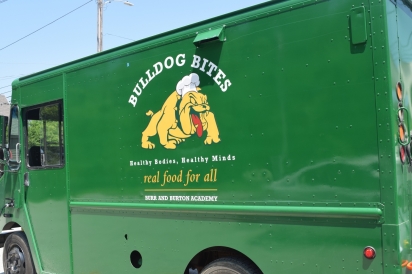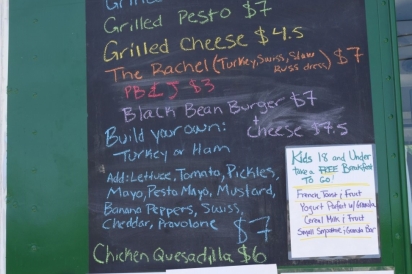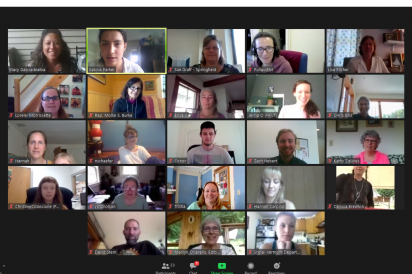VT FOOD ADVOCACY: Hunger Free Vermont
According to a recent U.S. Census update, Vermont now faces a higher rate of hunger and food insecurity than it experienced in the Great Recession of 2008. The state has seen a 60% increase in child hunger and food insecurity, and a 46% increase in overall food insecurity, since March. Even before the pandemic, more than one-third of our school children qualified for free and reduced price school meals.
It’s time for many of us to raise our consciousness of food insecurity here in Vermont. Because it impacts all our communities.
Anore Horton, executive director of Hunger Free Vermont, believes the problem is only going to get worse in the months ahead. “This is a hunger crisis with no end in sight,” she says. “With so many Vermonters struggling with lost jobs and decreased income, it’s more important now than ever that people know about established programs specifically designed to help them through crises like this one. Our goal is to keep families and individuals healthy and nourished, throughout this pandemic and beyond.”
Hunger Free Vermont was founded in 1993 as an anti-hunger education and advocacy organization. Charitable food alone does not end hunger; programs with proven track records such as 3SquaresVT and school and summer meals do. “At Hunger Free Vermont, we ensure that these federal programs stay strong and viable,” Anore says. “No Vermonter wants to ask for help. But these programs were developed to sustain our communities. We’ve all paid for them, and they are ours to use.”
The Hunger Free team is engaged in state and federal advocacy in Montpelier and Washington, DC. Anore explains, “We build relationships with our delegations and arm our legislators with information to keep nutrition programs in place to best meet the needs of Vermonters.” While programs receive federal funding, Hunger Free Vermont also relies on donations from individuals.
I asked Anore to walk me through several of her organization’s essential services: 3SquaresVT outreach, school and summer meal programs, and the Hunger Councils of Vermont.
3SquaresVT
3SquaresVT is Vermont’s name for SNAP (the Supplemental Nutrition Assistance Program), a federal program that helps low-income households purchase additional food so they have enough to eat to stay healthy. Participants receive an EBT (electronic benefits transfer) card in the mail, which functions like a debit card and can be used in grocery stores and at 29 farmers markets across Vermont.
Enrollment in 3SquaresVT surges during an economic downturn, and it contracts when things improve. Prior to Covid, enrollment in 3SquaresVT had been steadily declining. However, 2,725 new households have signed on since February. And in May, 72,855 individual Vermonters participated in 3SquaresVT. “With so many Vermonters laid off or facing a sudden change in income,” Anore explains, “3SquaresVT is there for them. It’s designed to help people buy healthy food.” That includes fruits and vegetables, meat, poultry and fish, dairy, bread, and cereal. “Think of it as an economic stimulus for Vermont,” she continues. “Keeping those dollars in our local grocery stores and farmers markets helps to sustain those businesses. It’s a form of true community service.”
School and Summer Meal Programs
The Vermont Agency of Education reports that more than one-third of the 84,000 students enrolled in Vermont schools qualified for free or reduced price meals in fall 2019. Prior to the pandemic, free and reduced price school meals were available to children only from low-income families. Because of Covid, and thanks to a new waiver, school meals—and now summer meals—are free for any child up to 18 years old, regardless of family income. No sign-ups, no applications, no questions asked. Just show up at a designated site and collect to-go breakfasts and lunches or a bag of food. Families can find the listing of locations and days and hours of service on the Hunger Free Vermont website.
The summer meal program covers all 14 counties in Vermont, with more than 150 meal drop-off/pick-up sites. And that number evolves as new sites and sponsors come on board to help meet the demand. “The more families use these meals, the more financially stable the summer meal program will be,” Anore notes. “The summer meals program in your community is for your kids—we want everyone to use it.”
Sarah McMillan coordinates the school food program at Burr and Burton Academy in Manchester, a role she shares with fellow staff member Lani Lovisa. In 2019, Burr and Burton purchased a food truck to enhance their program. This summer, Sarah and Lani have turned that truck, dubbed Bulldog Bites in honor of their school mascot, into a mobile summer meal outreach for the Manchester community.
“We decided to give it a shot and do our part to help,” Sarah says. “Schools are out, kids are in town, and they all need access to free and healthy meals. The Agency of Education was happy we came on board. It’s a big-time commitment but the need is there.”
Sarah runs the truck with three BBA alumnae. Sarah offers the same menu items she prepares in the Burr and Burton cafe during the school year, including chicken Caesar wraps, peanut noodle bowls with tofu or chicken, pork tacos, grilled sandwiches, and smoothies. Everything is made to order inside the panel truck’s efficient kitchen.
“Anyone can walk up and order food. There’s no discrimination, no stigma attached. If you’re 18 or under, it’s free. Over that, you pay.” Community reaction has been positive, and foot traffic increases each week as word gets out. “We want to showcase to the community what school food can look like.” Burr and Burton Academy helps cover any surplus expenses as a way of supporting this vital community program.
Hunger Councils of Vermont
Vermont’s Hunger Councils serve as regional hubs where community members and leaders of organizations and businesses come to network, share information, and generate strategic action to support food access in local communities. Ten Hunger Councils operate throughout Vermont and the Upper Valley of New Hampshire. Most are currently meeting weekly or bi-weekly via video or conference call, and are comprised of boots-on-the-ground connectors who remain undeterred by potential challenges posed by Covid-19.
Each Hunger Council is focused on maintaining healthy communities and ensuring strong nutrition services for families and older citizens. Anore explains, “Hunger Councils are made up of local people solving local nutrition problems. These are the people who understand the unique concerns and challenges within their communities.”
Anore closes with these observations. “The economic instability people are experiencing in Vermont, which is causing hunger, is not going to be solved or disappear anytime soon. Our emergency and charitable food systems, such as food pantries, are doing all they can to handle the unanticipated volume. Programs such as 3SquaresVT and school and summer meals were created for situations like people are experiencing right now. These programs will remain solidly in place after temporary federal measures expire, and to keep these programs strong, we actually need to use them and champion them.” hungerfreevermont.org
How can you help make a difference for children and families across Vermont?
JOIN a regional Hunger Council and learn how hunger affects your community. Fill out a simple online form found on the Hunger Free Vermont website.
DONATE to Hunger Free Vermont. (hungerfreevt.kindful. com) Their essential programs depend on people’s generous support.
SUBSCRIBE to the Hunger Free Vermont updates, especially the Advocacy Matters list. (hungerfreevt.org/new-page) Advocacy efforts this summer secured an additional $12 million to support summer meal programs throughout Vermont.









